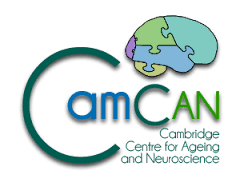The Methods Group at the CBU
The Methods group i) supports the scientific programmes at the CBU, ii) develops new methods, and iii) trains researchers in analysis of imaging and behavioural data, for example in annual internal lectures and international summer school (COGNESTIC). This support, development and training covers four broad areas:
- Physics of magnetic resonance imaging
- Analysis of (f)MRI data
- Analysis of EEG/MEG data
- Statistical analyses
The individuals covering these areas include:
Physics of MRI – Marta Correia
MRI data acquisition takes place on a full-time, research-dedicated, on-site Siemens 3T Prisma-Fit with a 32-channel head coil, as well as 20- and 64-channel head and neck coils; see CBU Facilities. Marta’s research includes: high-resolution and ultra-fast fMRI sequences at 3T and 7T, optimisation of diffusion imaging sequences for microstructural modelling and fibre tracking, harmonization of MRI data for multi-scanner studies, and prospective head-motion correction for fMRI using optical tracking.
MEG/EEG analysis – Olaf Hauk
MEG data acquisition takes place on a research-dedicated, 306-channel MEG Triux Neo system, with integrated EEG; see CBU Facilities. In addition to general MEG support, Olaf develops and evaluates novel methods for source estimation and functional connecttivity of EEG/MEG data, investigates co-registration of eye-movements and EEG/MEG in natural reading, improves standard analysis pipelines, optimises EEG/MEG recording and paradigms. Olaf also coordinates our annual internal lectures, our annual methods day and our international summer school, COGNESTIC.
fMRI analysis – Dace Apsvalka
In addition to general fMRI analysis support, Dace develops open analysis pipelines (in python), automated BIDS conversion, laminar fMRI analysis (eg at 7T), and prospective motion correction. Dace also organises our weekly Monday Methods Meetings.
Statistics – Peter Watson
In addition to general statistical support, Peter is developing methods for multiple imputation of missing data, structural equation models and random effects models for behavioural data. Many of these studies have focused on the effectiveness of targeted interventions. Peter also runs our annual lecture course on statistics.
General methods – Rik Henson
Rik is the programme leader responsible for the Methods Group, with a special interest in fMRI design efficiency, effective and multidimensional connectivity, Dynamic Causal Modelling, multimodal fusion and Bayesian Sequential Designs.
Other methods
We also have considerable experience with neurostimulation, such as Transcranial Magnetic Stimulation (TMS), including in combination with fMRI and EEG, led by Alex Woolgar and Ajay Halai, as well as Transcranial Electrical Stimulation (TES), led by Matt Davis, and Focused Ultrasound Stimulation (FUS), led by Camila Nord.
Our wikis
Over the years, we have developed extensive WIKIs that are used world-wide, e.g, for:
For further information on these topics, search our CBU Publications repository for papers by the above authors.

 MRC Cognition and Brain Sciences Unit
MRC Cognition and Brain Sciences Unit

